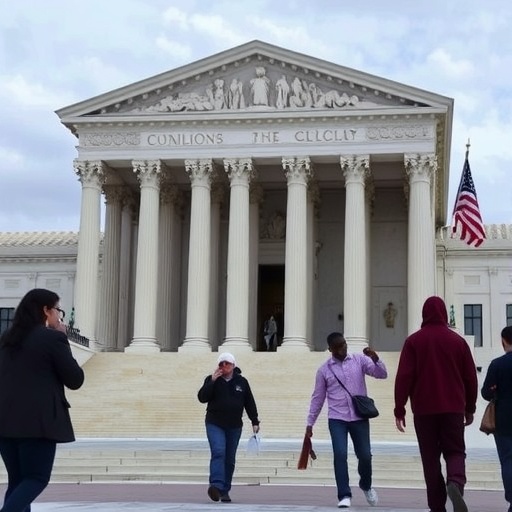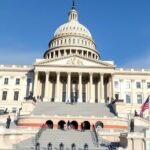Supreme Court Set to Tackle Voting Rights Battles in Georgia, Texas, and Arizona Before 2026 Midterms
In a move that could reshape the landscape of American elections, the U.S. Supreme Court has agreed to hear a consolidated case challenging restrictive voting access laws in Georgia, Texas, and Arizona. Announced on Monday, this high-stakes review targets provisions on voter ID requirements, mail-in ballot deadlines, and drop box availability, drawing sharp criticism from civil rights groups who argue these measures suppress minority votes. With the 2026 midterms looming, the decision—expected by mid-2025—could standardize election procedures across the nation or deepen partisan divides in voting rights enforcement.
- Georgia’s SB 202 Under Scrutiny: Drop Boxes and Early Voting Cuts
- Texas Voter ID Laws Face Renewed Legal Firestorm
- Arizona’s Mail-In Ballot Restrictions Spark National Debate
- Civil Rights Coalitions Unite: Quotes and Strategies from the Fight
- Election Law’s Future Hangs in the Balance: Implications for 2026 Midterms
The cases, brought by coalitions including the ACLU and NAACP, stem from post-2020 election reforms that critics say were designed to address unfounded fraud claims but instead erect barriers for eligible voters. According to a Brennan Center for Justice report, these laws have already led to a 5-10% drop in turnout among Black and Latino communities in affected states. “This is not just about three states; it’s about the soul of our democracy,” said Stacey Abrams, founder of Fair Fight Action, in a statement reacting to the news.
Georgia’s SB 202 Under Scrutiny: Drop Boxes and Early Voting Cuts
At the heart of the Georgia challenge is Senate Bill 202, enacted in 2021 amid widespread allegations of election irregularities. The law limits drop boxes to one per county, restricts their operating hours, and shortens the early voting window in some areas. Civil rights advocates contend these changes disproportionately affect urban voters in Atlanta and rural Black communities, where access to polling sites is already limited.
Statistics paint a stark picture: In the 2022 midterms, Georgia saw a 15% decrease in early voting participation compared to 2020, per data from the U.S. Election Assistance Commission. “SB 202 wasn’t about security; it was about selectivity,” argued Marc Elias, a prominent voting rights attorney representing the plaintiffs. The case, Georgia Coalition for the People’s Vote v. Raffensperger, alleges violations of the Voting Rights Act of 1965 and the 14th Amendment’s equal protection clause.
Defenders, including Georgia Secretary of State Brad Raffensperger, maintain that the measures enhance election integrity without unduly burdening voters. “We’ve seen no evidence of widespread disenfranchisement,” Raffensperger said in a recent interview with The Atlanta Journal-Constitution. Yet, a federal district court in 2023 struck down parts of the law, prompting the state’s appeal to the Supreme Court.
Experts predict the justices’ ideological split— with a 6-3 conservative majority—could lead to a narrow ruling upholding most provisions while invalidating the most egregious ones. This section of the case highlights ongoing tensions in the South, where historical disenfranchisement efforts echo in modern election law debates.
Texas Voter ID Laws Face Renewed Legal Firestorm
Texas enters the fray with its stringent Senate Bill 1, passed in 2021, which mandates photo ID for all voting methods, including mail-in ballots, and criminalizes assisting voters with absentee applications under certain conditions. Civil rights groups, led by the Texas Civil Rights Project, claim these rules violate federal protections by creating undue hurdles for elderly, disabled, and low-income voters, many of whom lack easy access to IDs.
A 2023 study by the University of Texas at Austin found that SB 1 contributed to over 100,000 potential voters being turned away or deterred in the 2022 elections, with Latino turnout dropping by 8% in border counties. “This isn’t protection; it’s suppression disguised as precaution,” stated Mimi Marziani, executive director of the Texas Civil Rights Project, during oral arguments in lower courts.
The Supreme Court case, Texas Impact Project v. Abbott, consolidates challenges from multiple plaintiffs, including League of Women Voters chapters. Texas Attorney General Ken Paxton has defended the law vigorously, citing a 2022 audit that reported fewer than 0.01% of votes as potentially fraudulent. However, opponents point to the law’s ban on drive-thru voting—a popular option in Houston during the pandemic—as a targeted blow to densely populated, diverse areas.
Broader context reveals Texas’s history of voting rights litigation; the state was under federal preclearance until the Supreme Court’s 2013 Shelby County v. Holder decision gutted key Voting Rights Act provisions. This review could reinvigorate calls for legislative fixes, especially as Texas’s growing population amplifies the stakes for national election law uniformity.
Arizona’s Mail-In Ballot Restrictions Spark National Debate
Arizona’s contribution to the docket involves House Bill 2492, which imposes strict deadlines for mail-in ballot cures—allowing voters to fix signature mismatches—and limits the use of private drop boxes. Challenged by groups like Voto Latino, the law is accused of disenfranchising Native American and Hispanic voters, who rely heavily on mail voting due to geographic isolation.
Data from the Arizona Secretary of State’s office shows that in 2020, over 80% of ballots were cast by mail, but post-HB 2492, rejection rates for signature issues rose by 25% in 2022. “These rules turn minor errors into major barriers,” said Emma Torres, policy director at Voto Latino, in a press release. The case, Arizona Alliance for Voter Access v. Hobbs, argues the provisions conflict with the National Voter Registration Act and burden protected classes under civil rights statutes.
Governor Katie Hobbs, a Democrat who oversees elections, has expressed reservations about the law’s implementation, though Republican-led lawmakers insist it prevents fraud. A notable twist: Hobbs herself was elected in 2022 amid similar disputes, underscoring the personal stakes for state officials. Federal appeals courts have issued mixed rulings, with the Ninth Circuit partially upholding the cure period extensions but striking down drop box limits.
This Arizona segment ties into larger conversations about mail voting’s future, especially after the 2020 election’s record usage. With remote work and mobility on the rise, any Supreme Court affirmation could influence how states balance convenience with verification in an era of heightened election skepticism.
Civil Rights Coalitions Unite: Quotes and Strategies from the Fight
The consolidation of these cases represents a strategic masterstroke by civil rights organizations, pooling resources to amplify their message before the nation’s highest court. The NAACP Legal Defense Fund, co-counsel in all three, has mobilized over 50 advocacy groups, filing amicus briefs from entities like the U.S. Conference of Mayors and tech giants concerned about voter access for employees.
“The Supreme Court has a chance to affirm that voting is a fundamental right, not a privilege for the few,” declared Sherrilyn Ifill, president of the NAACP LDF, at a virtual rally last week. Strategies include leveraging data analytics to demonstrate disparate impacts—such as how Georgia’s drop box rules add 30-45 minutes of travel time for 40% of Black voters—and drawing parallels to landmark cases like Anderson v. Celebrezze (1983), which struck down undue ballot access burdens.
On the other side, conservative think tanks like the Heritage Foundation have submitted briefs supporting the states, arguing that localized election laws foster trust. “Uniform federal mandates would erode state sovereignty,” wrote Hans von Spakovsky, a senior fellow at Heritage, in a recent op-ed for National Review.
Public engagement is ramping up: Petitions on Change.org have garnered over 200,000 signatures, and social media campaigns under #ProtectTheVote are trending. This unified front not only pressures the Court but also builds momentum for potential congressional action on voting rights reform.
Election Law’s Future Hangs in the Balance: Implications for 2026 Midterms
As arguments are slated for early 2025, the Supreme Court’s ruling could cascade through election law nationwide, potentially invalidating similar restrictions in over 20 states. Analysts from the nonpartisan Campaign Legal Center warn that upholding these laws might suppress up to 2 million votes in the 2026 midterms, particularly in battleground districts where margins are razor-thin.
Forward-looking, a pro-voter decision could spur states like Florida and North Carolina to expand access, boosting turnout among young and minority demographics—key to Democratic strategies. Conversely, a conservative win might embolden further restrictions, fueling litigation and eroding public confidence, as evidenced by a recent Pew Research poll showing 35% of Americans doubt election fairness.
Experts like Rick Hasen, author of Election Meltdown and UC Irvine law professor, foresee ripple effects on federal legislation. “If the Court sides with access, it could pave the way for a new Voting Rights Act; otherwise, we’re headed for more chaos,” Hasen told Reuters. States are already preparing: Georgia has invested $10 million in poll worker training, while Texas pilots new ID programs.
Beyond 2026, the decision will influence redistricting battles and tech’s role in voting, such as secure apps for absentee requests. Civil rights leaders urge vigilance, with Abrams calling for grassroots mobilization: “The midterms are our deadline—democracy demands we act now.” As the nation watches, this case underscores the enduring fight for equitable voting rights in a polarized era.
In the coming months, oral arguments will likely feature intense debates on federalism versus equality, with Justice Sonia Sotomayor expected to lead progressive questioning. Lower courts’ stays on parts of these laws mean temporary relief for voters, but the Supreme Court’s word will be final. Stakeholders from both sides are bracing for impact, knowing that election procedures could look vastly different by November 2026.










